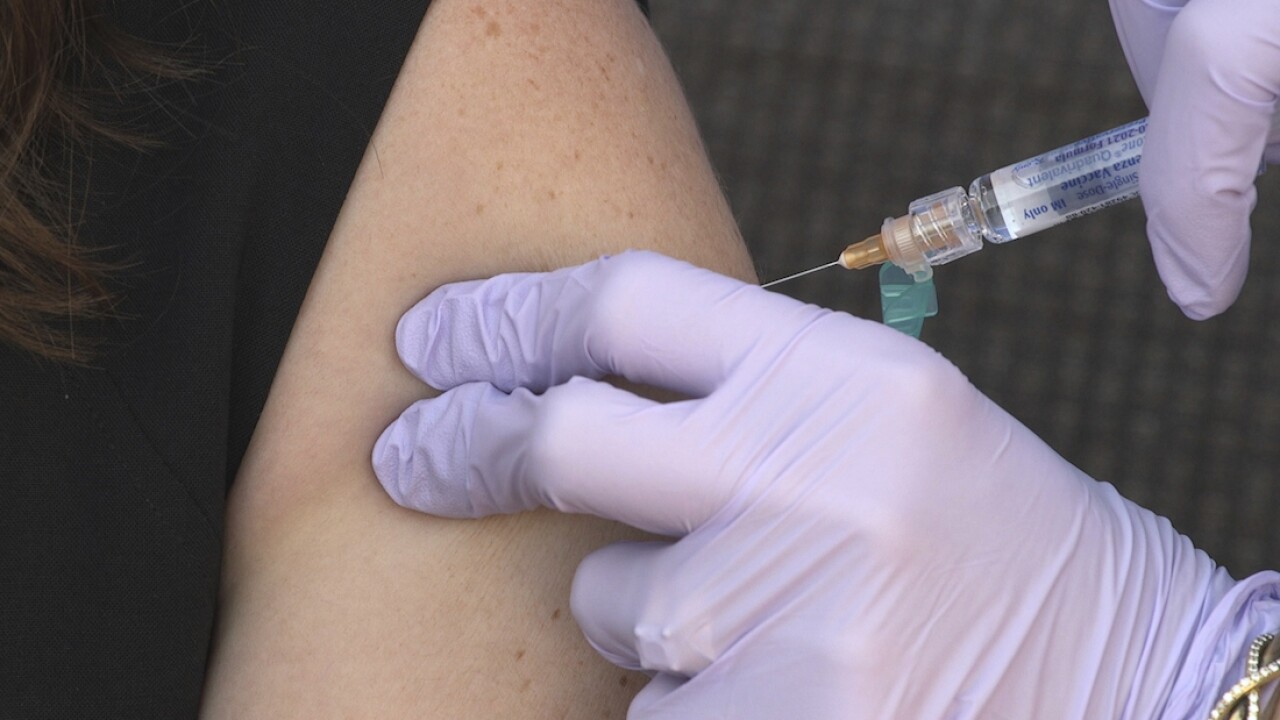LANSING, Mich. (AP) — Republican legislative leaders on Friday welcomed Gov. Gretchen Whitmer’s metric-based approach to further relaxing coronavirus restrictions, but they questioned what will happen if Michigan’s COVID-19 vaccination rate falls below targets.
Their comments came a day after the Democratic governor announced four benchmarks that will trigger additional economic reopening — when 55%, 60%, 65%, and 70% of people ages 16 and up get at least one shot. About half have done so to date. The state, where the seven-day infection rate remains highest in the U.S. but is dropping, now needs at least two of every five unvaccinated residents to receive a dose.
“I think that we need a little more of a discussion on this metric of vaccines alone. I believe there’s a little more breadth that needs to be taken into consideration there, especially if we run into resistance and reluctance that causes us to plateau below the numbers that have been indicated,” Senate Majority Leader Mike Shirkey, of Clarklake, said during a virtual event sponsored by the Detroit Regional Chamber. It included all four legislative leaders.
House Speaker Jason Wentworth, of Clare, applauded Whitmer for providing people “some sense of hope” and said both the vaccination rate and vaccine accessibility are important.
“If we were to plateau, what are we going to look at in terms of infection rates and other things to help us not go backward (and) continue to look ahead?” he said in the forum, suggesting the GOP-Legislature should be involved. The governor has declined to say what will happen if the vaccine milestones are not reached.
“We are confident Michiganders will make the choice to get vaccinated to protect themselves and their communities,” spokesman Bobby Leddy said.
Wentworth noted the possibility of additional coronavirus variants and said people who were infected and made antibodies to the virus may not want the vaccine. Shirkey, for instance, has not been vaccinated since battling COVID-19 late last year but strongly encouraged anyone who “desires” a shot to get one.
House Minority Leader Donna Lasinski, a Democrat from Washtenaw County’s Scio Township, said if vaccine hesitancy continues to be an issue, legislative leaders should work together to share facts so that residents are informed, potentially through public service announcements.
“As we look at that risk assessment, we need to remember that we’re not just putting ourselves at risk when we choose not to be vaccinated,” she said, urging people to think about “those who are around us.”
Senate Minority Leader Jim Ananich, of Flint, expressed confidence that the 70% target will be met. A segment of the population is hesitant but open to being vaccinated, he said.
“I think if we can inspire, we can reach that number,” he said.
Ananich and Lasinski are fully vaccinated. A spokesman did not say if Wentworth is vaccinated but said he recently hosted a Capitol vaccine clinic for legislators and staffers. A left-leaning advocacy group has called on GOP lawmakers to encourage people to get vaccinated.
The legislative leaders spoke as the Legislature starts to propose ways to spend nearly $5.7 billion in federal pandemic relief funding over which the state has discretion. Shirkey said high priorities include bridges and dams, which the government has trouble maintaining on an ongoing basis.
“They always get Band-Aided. When you do fix them properly like we can do now with this kind of money, their maintenance costs actually go down,” he said. He also mentioned roads, water and sewer systems, broadband, education, and business recovery.
The state on Friday reported 36 additional deaths and more than 3,400 new confirmed cases. The seven-day daily average was more than 3,700, which was down from around 7,000 two weeks earlier. The number of adults hospitalized with confirmed infections fell below 3,000 after peaking above 4,100 early last week. The seven-day death rate, 2.5 per 100,000 residents, was the third-highest among states.


